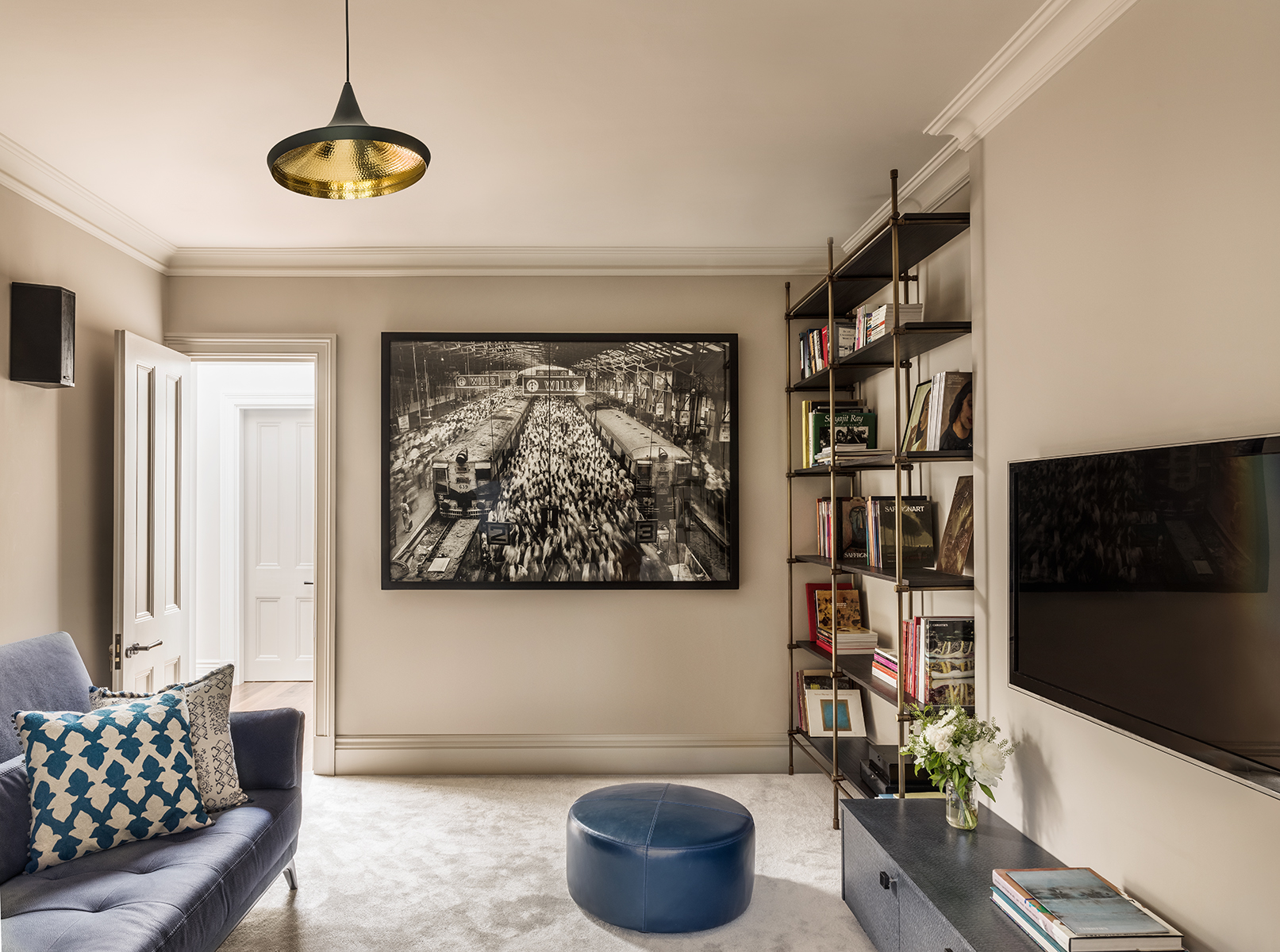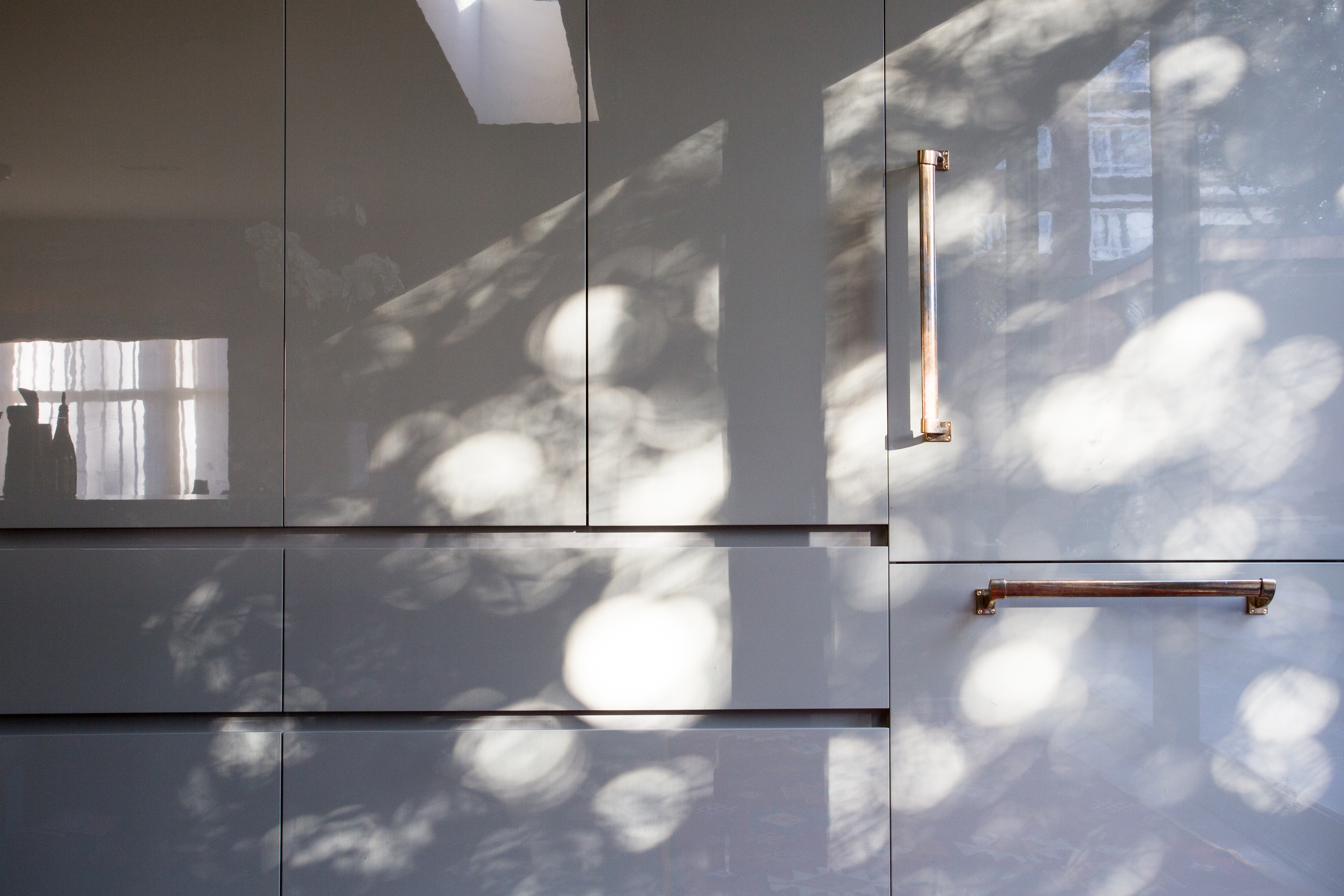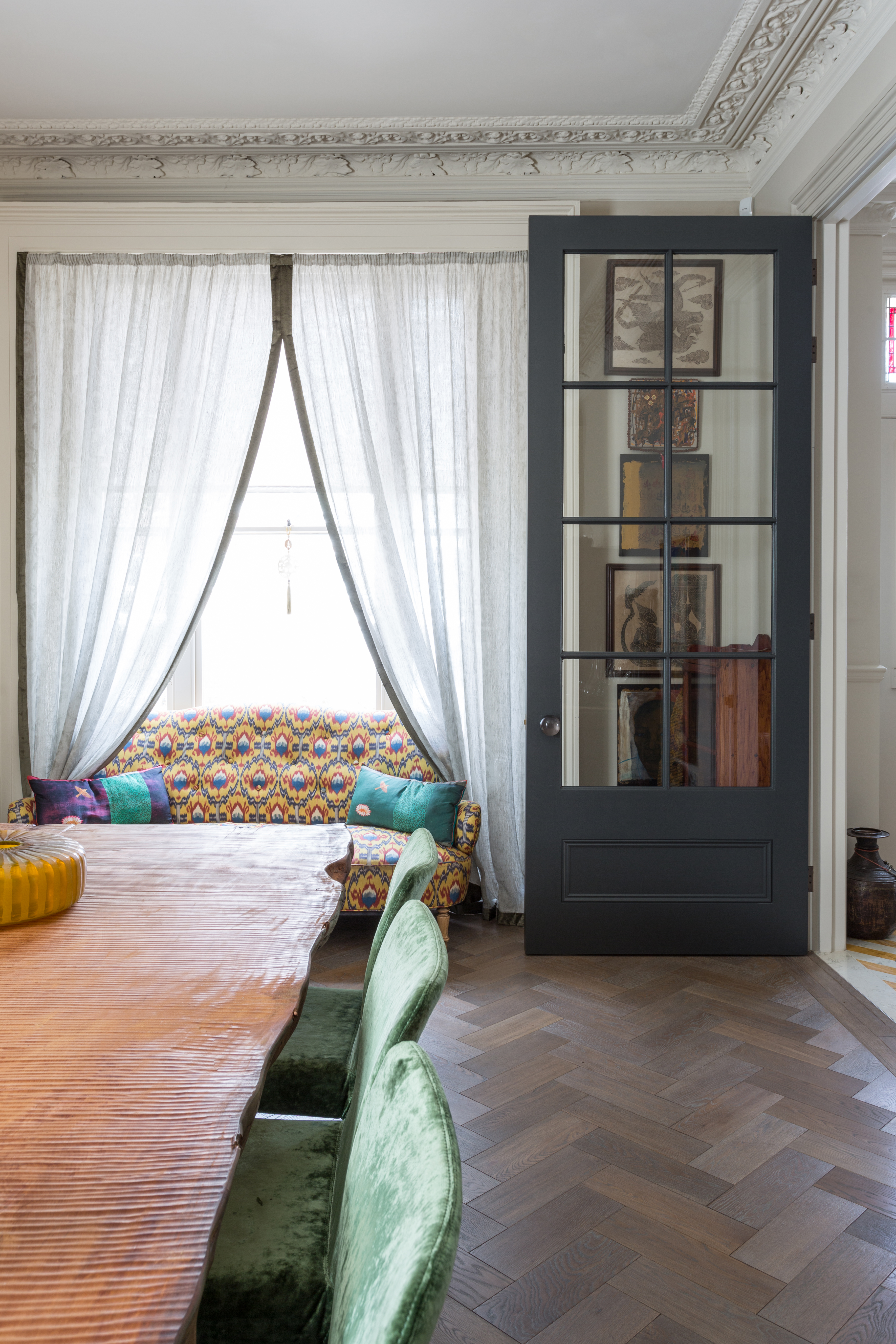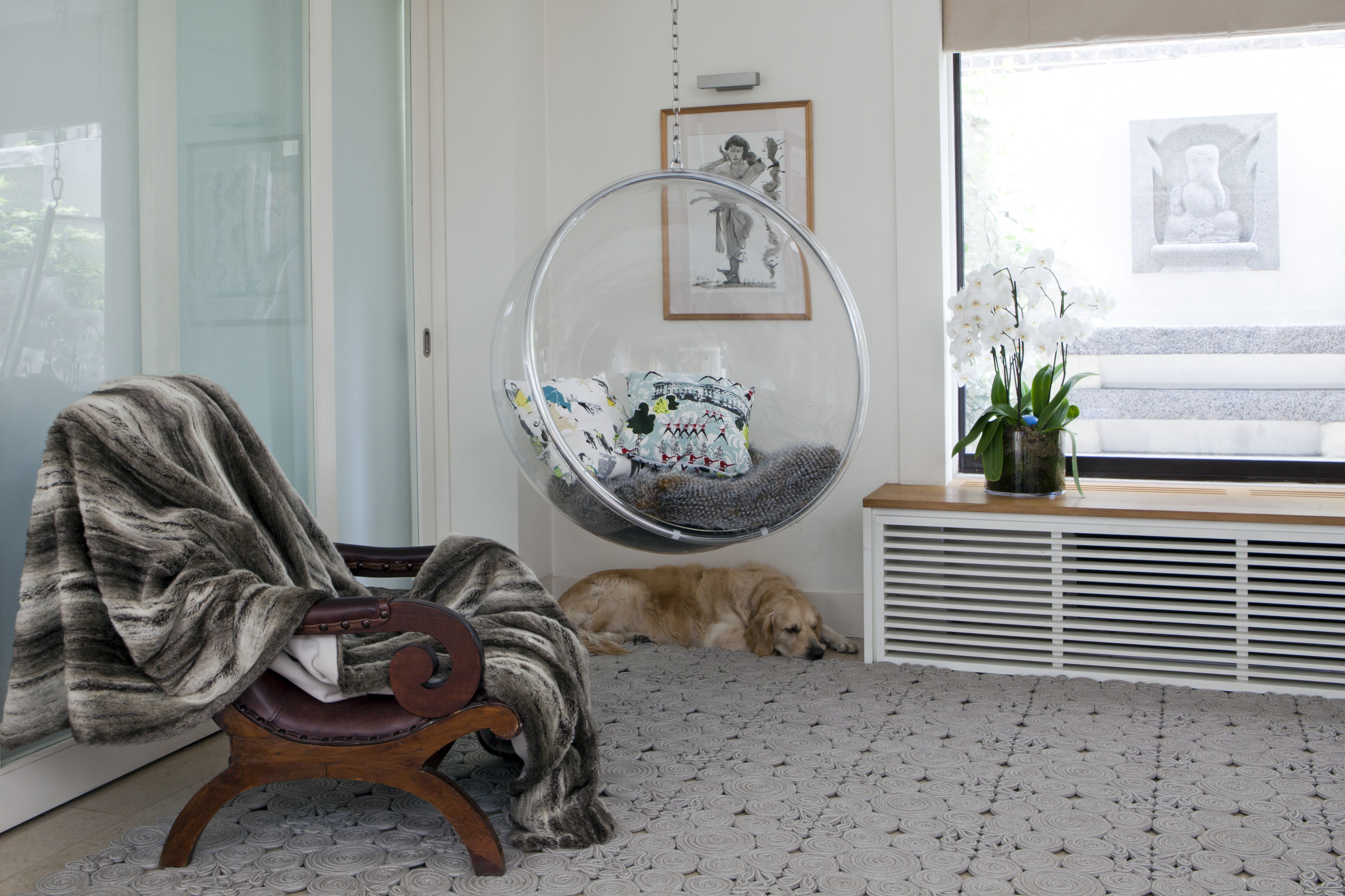There are several aspects to designing healthy interiors. Primarily, as designers, we ensure that the natural light and air flow is effective throughout the layout of the space. For the soft and hard finishes, the furniture and lighting we use natural materials where possible. By organising the space to create the fluid and flexible use of it, lifestyles are streamlined through the smooth running of the environment. By incorporating quiet and peaceful private zones and bringing nature indoors whether through planting or views through windows, these are all aspects to shaping a healthy interior. Find our 5 top easy steps here:
Ergonomics

Adapting your space and furniture to you rather than you to your space is a fundamental way to have a healthy way of living, working and doing. There are many ergonomic desk chairs on the market which are good for studying and working at a desk as the design is suited to the body, rather than being a design that looks great but is not adapted especially to the seated human form. Opting for upholstered dining chairs rather than hard material chairs adds a necessary level of comfort and arms on lounge chairs are key. Changes in the kitchen such as having an oven at hip height rather than low down and low drawers rather than cupboards mean that you don’t need to bend down often. The best way to ensure comfort in your space it to try furniture before you buy it. Using a standing desk or a bar height surface when you work encourages you to stand rather than being seated for long hours in a position that strains your posture. Successful sleep is one of the main elements for health. By choosing a mattress that is comfortable and supportive teamed with black-out blinds or curtains, you create a setting that aids good sleep.
Good organisation

There is a surge of programmes and literature about organising and purging the copious amount of stuff we can accumulate with cheap products easily bought, forgotten about but taking up space. Minimise clutter by putting things you don’t need on a daily basis away and keeping items that are useful and/or meaningful on display. Choose storage with both open and closed areas so you can hide necessary but unattractive items, such as folders and files, and display objects that are meaningful and beautiful. Close off messy spaces behind doors such as utility areas or kitchen units, so if you don’t have time to tidy up at that point you can at least conceal any mess. Many of us live in busy households and lack the time or motivation to tidy up so a good way to reduce the daily debris of life is to keep a few empty baskets on hand to put toys, clothes, and anything that needs to be tidied away into so the items can be put away later allowing you to clear the space for now. Create displays with your objects on shelves or window sills, highlighting special pieces from travels or pieces gifted to you. Hang jewellery on a peg board in a bedroom as a functional decorative feature. At work you can have a paperless desk policy, keeping piles to a minimum. If storage space is lacking, there are lots of great pieces of furniture on the market that incorporate storage such as low filing cabinets with a padded upholstered top which can be used as an extra seat, pulled out for impromptu meetings. Coffee tables with shelves underneath or ottomans with storage space inside are good options for the home.
A padded upholstered filing cabinet for impromptu meetings by Elite.
Maximise natural light

Natural light is energy boosting and helps your body’s circadian rhythm. Make the most of your windows, opening them as often as possible for a blast of fresh air, and keeping curtains, blinds and shutters open to maximise the natural light in your interior. If you don’t have ample natural light, using mirrors reflects light around a space, brightening it and, as a bonus, making it feel more spacious. Glass interior doors instead of solid doors enhance light flow and light bounces off the glass reflecting more of it around the space. Glass furniture is another option to make a room feel more spacious and airy. Tables and shelving are two good options for glass furniture.

The sheer curtain and glass door allow light to flow throughout the dining room and hallway in this home. If you don’t need privacy use a sheer fabric, instead of a solid fabric curtain, which is lighter overall on the window, avoiding blocking any light.

This dressing room is such a bright space with the glass-fronted doors bouncing light around the room. The pleated fabric behind the doors conceals the clothing and other items within, keeping a crisp and tidy look in the room.
Healthy cleaning with natural products
We can’t control the air outside our interiors but we can control the air within. Along with using natural materials and fibres for furnishing, using natural ingredients for cleaning products and essential oils, instead of artificial room sprays, can make a positive difference to the air quality in your home. There are many cleaning products for both the kitchen and bathroom on the market which absorb dirt rather than chemically degrading it and are free from parabens, phthalates, animal by-products or triclosan. This means a healthier environment in your house as chemicals from cleaning products aren’t polluting the air. There are now many cleaning companies specialising in using ecologically friendly, hypo-allergenic and 100% biodegradable products. Some cleaning companies even go one step further by clearing the air through burning sage or Palo Santo and decluttering. One such company operating in London is Holistic Cleaners.
Space for thought and pause

Our days are busier than ever as they are occupied with interaction with technology, we’re always contactable and it can be hard to learn to switch off even for ten minutes. It’s a love/ hate relationship for many as we need technology yet feel that we should cut down on our time with it by doing digital detoxes. At home you can dedicate a space as a tech-free area, thereby reducing distractions, letting you enjoy time with family or hobbies. Choose a wall unit for your media with doors so you can close your TV behind them, concealing the temptation to watch something. Find a spot in your home or office where there is minimal noise and comfy seating so you can dedicate a moment to yourself, restoring your mind and resting your body.

Make the most of sunny days, no matter the season, by spending some precious time outdoors. Whether you relax by reading, listening to music or exercising, being able to enjoy these activities outdoors adds another level of heathy living as you absorb vitamin D whilst refreshing your mind and body in the elements. Not all homes and offices have outdoor spaces so finding a spot with a view through a window to greenery is a great alternative. Placing potted plants indoors and plants on window sills brings the verdant life-giving colours of foliage indoors, providing vibrant pops of green.
Follow us here and subscribe here for all the latest news on how you can keep Thriving.
Stay up to date or catch-up on all our podcasts with Arianna Huffington here.


